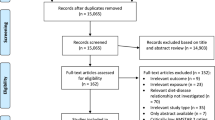Abstract
Background
Determination of daily protein intake in the management of chronic kidney disease (CKD) requires precision. Inaccuracies in recording dietary intake occur, and estimation from total urea excretion presents hurdles owing to the difficulty of collecting whole urine for 24 h. Spot urine has been used for measuring daily sodium intake and urinary protein excretion.
Methods
In this cross-sectional study, we investigated whether urea nitrogen (UN) concentration in spot urine can be used to predict daily protein intake instead of the 24-h urine collection in 193 Japanese CKD patients (Stages G1–G5). After patient randomization into 2 datasets for the development and validation of models, bootstrapping was used to develop protein intake estimation models.
Results
The parameters for the candidate multivariate regression models were male gender, age, body mass index (BMI), diabetes mellitus, dyslipidemia, proteinuria, estimated glomerular filtration rate, serum albumin level, spot urinary UN and creatinine level, and spot urinary UN/creatinine levels. The final model contained BMI and spot urinary UN level. The final model was selected because of the higher correlation between the predicted and measured protein intakes r = 0.558 (95 % confidence interval 0.400, 0.683), and the smaller distribution of the difference between the measured and predicted protein intakes than those of the other models.
Conclusion
The results suggest that UN concentration in spot urine may be used to estimate daily protein intake and that a prediction formula would be useful for nutritional control in CKD patients.



Similar content being viewed by others
References
Kanno Y, Sasaki S, Suzuki H. Nutritional assessment by a new method for patients with renal disease. Contribut Nephrol. 2007;155:29–39.
Bountziouka V, Panagiotakos DB. Statistical methods used for the evaluation of reliability and validity of nutrition assessment tools used in medical research. Curr Pharm Des. 2010;16:3770–5.
Ginsberg JM, Chang BS, Matarese RA, Garella S. Use of single voided urine samples to estimate quantitative proteinuria. N Engl J Med. 1983;309:1543–6.
Evidence-based clinical practice guideline for ckd 2013. Clin Exp Nephrol 2014;18:346–423.
Sakamoto K, Kanda E, Hirayama T, Matsumoto Y, Nakajima K, Muneyuki T, Watanabe S, Kanno Y. Estimating daily protein intake by urea nitrogen concentration in spot urine. J Jpn Soc Clin Nutr. 2014;36:34–9.
Maroni BJ, Steinman TI, Mitch WE. A method for estimating nitrogen intake of patients with chronic renal failure. Kidney Int. 1985;27:58–65.
Chapter 9. Evaluation method for kidney function and urinary findings. Clin Exp Nephrol 2009;13:209–211.
Plantinga LC, Boulware LE, Coresh J, Stevens LA, Miller ER 3rd, Saran R, Messer KL, Levey AS, Powe NR. Patient awareness of chronic kidney disease: trends and predictors. Arch Intern Med. 2008;168:2268–75.
Peleg AY, Hooper DC. Hospital-acquired infections due to gram-negative bacteria. N Engl J Med. 2010;362:1804–13.
Kawano Y, Tsuchihashi T, Matsuura H, Ando K, Fujita T, Ueshima H, Working Group for Dietary Salt Reduction of the Japanese Society of H. Report of the working group for dietary salt reduction of the Japanese society of hypertension: (2) assessment of salt intake in the management of hypertension. Hypertens Res. 2007;30:887–93.
Simmons WK. Urinary urea nitrogen–creatinine ratio as indicator of recent protein intake in field studies. Am J Clin Nutr. 1972;25:539–42.
Imai E, Yasuda Y, Horio M, Shibata K, Kato S, Mizutani Y, Imai J, Hayashi M, Kamiya H, Oiso Y, Murohara T, Maruyama S, Matsuo S. Validation of the equations for estimating daily sodium excretion from spot urine in patients with chronic kidney disease. Clin Exp Nephrol. 2011;15:861–7.
Acknowledgments
The authors thank Dr. Edward Barroga, Associate Professor and Senior Medical Editor of Tokyo Medical University for editing the manuscript. Part of this study was presented at the 55th Congress of the Japanese Society of Nephrology (2012, Yokohama, Japan), and at the 44th Annual Congress of the American Society of Nephrology (2012, San Diego, USA).
Author information
Authors and Affiliations
Corresponding author
Ethics declarations
Conflict of interest
None declared.
About this article
Cite this article
Kanno, H., Kanda, E., Sato, A. et al. Estimation of daily protein intake based on spot urine urea nitrogen concentration in chronic kidney disease patients. Clin Exp Nephrol 20, 258–264 (2016). https://doi.org/10.1007/s10157-015-1164-5
Received:
Accepted:
Published:
Issue Date:
DOI: https://doi.org/10.1007/s10157-015-1164-5




